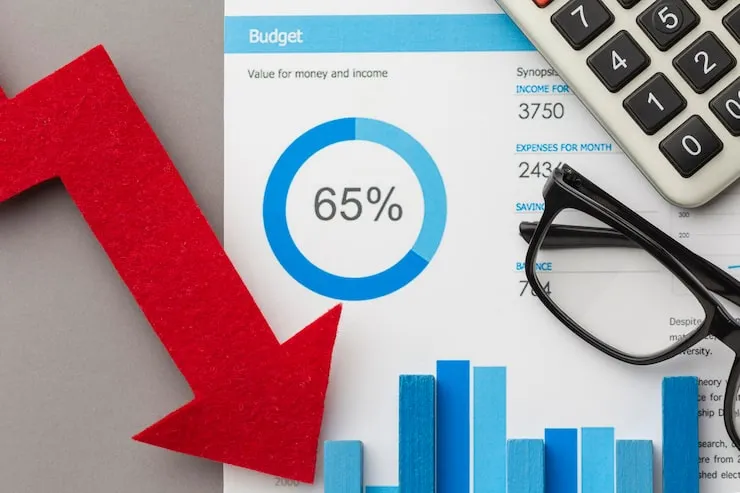
Hidden Mutual Fund Fees: Simple Guide to Hidden Mutual Fund Fees to Avoid
Mutual funds are one of the most common ways to contribute cash in India. Individuals utilize them to develop riches in the long run. But numerous speculators do not know that shared reserves moreover come with additional charges. These charges are not continuously simple to see. A few are appeared in little content. A few are not clarified clearly. These are called hidden mutual fund fees.
These hidden fees slowly take away a part of your returns. You may think your cash is developing quick. But covered up costs can diminish the last sum. So it is exceptionally critical to know all hidden mutual fund fees to avoid. This straightforward direct will offer assistance you get it each charge in simple words. You will too learn how to check these expenses and how to spare your cash from futile charges.
What Are Hidden Mutual Fund Fees?
Hidden mutual fund fees are little costs that are not clearly appeared to speculators. Numerous individuals miss them since they are composed profound interior reports. A few expenses are included interior the support. A few expenses are charged when you purchase or offer units.
These costs influence your add up to return. Indeed a little charge of 1% can make a gigantic distinction in 10 years.
Why You Must Observe Out for Covered up Fees?
Hidden expenses matter because:
- They reduce total growth.
They cut your benefit each year.
They increment long-term loss.
They make your speculation see way better than it truly is.
If you maintain a strategic distance from these expenses, you keep more cash in your pocket.
Read More: Compounding Mutual Funds: The Smart Way to Grow Wealth
Most Common Hidden Mutual Fund Fees in India
Here are the most common covered up common support expenses in India. Each financial specialist ought to know them some time recently investing.
1. Mutual Fund Expense Ratio
This is the greatest and most imperative expense. The cost proportion is the fetched you pay each year to oversee your finance. It includes:
- Management charges
- Admin charges
- Marketing charges
- Operating cost
A tall cost proportion is a major covered up taken a toll. Numerous individuals do not check it. But it decreases your returns quietly.
Tip:
Choose reserves with a moo cost proportion. List stores and coordinate plans as a rule have lower costs.

2. 12B-1 Marketing Fees
These expenses are utilized for the fund’s showcasing and advancements. Numerous financial specialists do not know they are paying for the advertisements. These charges are included interior the cost proportion. So they remain hidden.
3. Mutual Fund Brokerage Charges
These are costs the support pays when it buys and offers stocks. If the finance supervisor exchanges exceptionally frequently, the brokerage fetched gets to be tall. This influences your returns. These costs are not continuously appeared clearly. They are included interior the fund’s day by day value.
Tip:
Choose stores with moo turnover. It makes a difference to diminish covered up brokerage charges.
4. Front-End Load Fees
These are passage expenses. A few stores charge cash when you purchase units. This decreases the sum that goes into the venture. Whereas numerous stores evacuated passage stack, a few still take little charges.
5. Back-End Load or Exit Load
Exit stack is a expense charged when you offer your units. It is a covered up fetched since numerous speculators do not check exit stack rules.
Most value reserves charge exit stack if you recover units inside one year. It can be 1% or more.
6. Cash Drag Cost
Sometimes stores keep additional cash in cash. This diminishes returns since sit still cash does not gain. This is a covered up taken a toll and not appeared clearly to investors.
7. High Turnover Cost
A support with tall portfolio turnover implies it buys and offers numerous stocks. This increases:
- Brokerage cost
- Taxes
- Slippage cost
Most speculators do not see this. But it has a solid affect on long-term performance.
Hidden Mutual Fund Fees Calculator: Why You Need One
A covered up shared finance expenses calculator makes a difference you check how much you are losing due to tall costs. You enter:
- Expense ratio
- Exit load
- Brokerage cost
- Holding time
Then it appears the last return after all fees.
This device makes a difference you compare reserves effectively. Numerous apps in India offer this calculator. It is valuable for apprentices and experts.
Mutual Support Charges in India: Full List
Here is a straightforward list of all common shared finance charges in India:
- Expense ratio
- Entry load
- Exit load
- Transaction charges
- Stamp duty
- Brokerage charges interior the fund
- Tax on gains
- Platform expenses (a few apps)
Knowing these charges makes a difference you maintain a strategic distance from high-cost funds.
Platform-Based Hidden Charges (India’s Top Apps)
Many individuals contribute through stages like Upstox, Groww, and Zerodha. These stages claim to be free. But a few costs still show up in certain cases.
Groww Common Support Charges
- Groww does not charge for buying or offering coordinate common stores. But charges may include:
- Exit stack by the AMC
- Expense ratio
- Stamp duty
- Bank charges for withdrawal (uncommon cases)
Groww does NOT include additional stage expenses. So it is cheaper than numerous ancient brokers.
Zerodha Mutual Fund Charges
Zerodha charges no fee for direct mutual fund investments. But they do charge:
- Account support charge for the Demat (in the event that utilized for other investments)
- Stamp duty
- Exit stack from the support house
Zerodha is prevalent since it has no additional shared finance charges.
Upstox Shared Support Withdrawal Charges
Upstox does not charge for common support buying or offering in coordinate mode. But some of the time clients confront little withdrawal charges based on bank rules. These are not Upstox stage fees.
The fundamental expenses still come from:
- Fund cost ratio
- Exit load
- Stamp duty
How Hidden Fees Reduce Your Final Wealth (Simple Example)
Let us see a straightforward illustration so you can get it how covered up expenses work.
Imagine two funds:
- Fund A: Cost proportion 0.5%
- Fund B: Cost proportion 2%
Both provide the same advertise return.
If you contribute ₹1,00,000 for 10 years:
- Fund A develops much more
- Fund B gives less due to tall fees
The contrast can be ₹50,000 to ₹1,00,000 or indeed more in long-term investment.
This appears why checking covered up common support expenses is exceptionally important.
Read Also: How RBI Rate Cuts Impact Debt Mutual Funds?
How to Check Covered up Shared Finance Expenses in India?
Most individuals skip perusing support records. But you can check covered up expenses effortlessly utilizing these steps.
Check the Finance Factsheet
Every finance has a factsheet. It shows:
- Expense ratio
- Turnover ratio
- Exit load
- Risk level
These numbers offer assistance you get it all charges.
Read the Scheme Information Document (SID)
The SID appears point by point expense rules. It clarifies all coordinate and circuitous expenses. It is long but exceptionally helpful.
Compare Cost Ratios
Always check your fund’s cost proportion with other reserves in the same category.
For example:
- Index reserves: As a rule low
- Large-cap stores: Moderate
- Small-cap stores: In some cases high
- Pick the one with way better returns and lower costs.
Use Fee Comparison Tools
Online instruments appear which stores have tall or moo expenses. They moreover appear long-term impact.
How to Avoid Hidden Mutual Fund Fees

Here are basic tips to maintain a strategic distance from all common covered up common support expenses in India.
1. Choose Direct Plans
Direct plans have lower cost proportions. You can spare 1% to 1.5% each year.
2. Choose Low-Cost List Funds
Index stores track the advertise. They do not require dynamic administration. So the cost proportion is low.
3. Compare Funds Before Investing
Do not select a support fair by promotion. Continuously compare fees.
4. Avoid Funds with High Turnover
Funds with tall exchanging taken a toll diminish returns. Select steady funds.
5. Check Exit Stack Rules
Do not offer some time recently the exit stack period closes. This spares money.
6. Check the Stage Charges
Before contributing through Groww, Zerodha, or Upstox, check all charges. Most of them offer free common support contributing. But stamp obligation and exit stack still apply.
Key Takeaways
- Hidden shared finance expenses decrease your returns.
- Expense proportion is the greatest cost.
- Exit stack can diminish your withdrawal amount.
- Brokerage charges interior the finance influence returns.
- Always check factsheets and expense details.
- Compare reserves utilizing a covered up common support expenses calculator.
- Choose coordinate plans to spare most extreme money.
Conclusion
Hidden shared finance expenses can diminish your benefit without you indeed taking note it. These charges may see little, but they make a huge affect on long-term riches. So it is exceptionally imperative to get it hidden mutual fund fees and learn the hidden mutual fund fees to avoid some time recently you contribute.
When you check expenses like the cost proportion, exit stack, and common finance brokerage charges, you ensure your cash from futile costs. Utilize devices like a covered up shared finance expenses calculator and compare charges on stages like Groww, Zerodha, and Upstox. Select low-cost reserves and coordinate plans.
FAQs
1. What are hidden mutual fund fees?
Hidden shared finance expenses are little charges that are not clearly appeared to speculators. They incorporate cost proportion, exit stack, brokerage interior the finance, and other costs that decrease returns.
2. How do hidden fees affect my mutual fund returns?
Hidden expenses diminish your last benefit. Indeed a little charge, like 1%, can make a huge distinction over numerous a long time. This implies you get less cash at the end.
3. How can I check mutual fund fees in India?
You can check expenses in the support factsheet and Conspire Data Archive (SID). See for the cost proportion, exit stack, and turnover ratio.
4. Are Groww, Zerodha, and Upstox free for shared funds?
Yes, these stages offer free coordinate shared finance contributing. But you still pay charges like cost proportion, exit stack, and stamp obligation that come from the support house.
5. How can I avoid hidden mutual fund fees?
Choose coordinate plans, choose low-cost list stores, maintain a strategic distance from high-turnover reserves, check exit stack rules, and compare cost proportions some time recently contributing.


